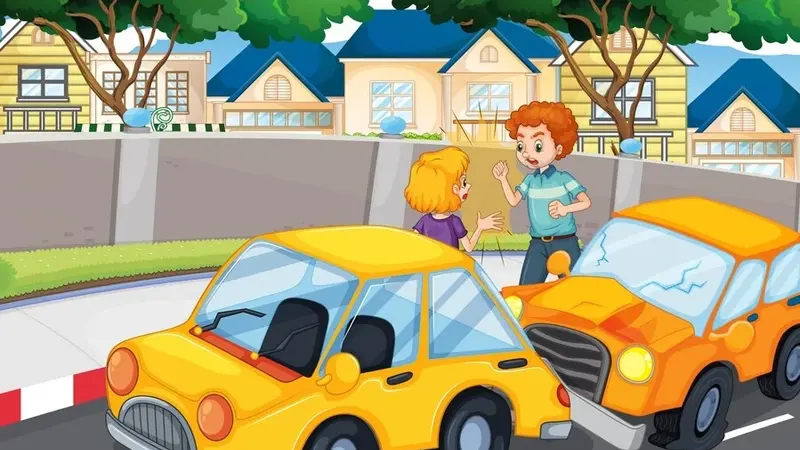Every year, countless accidents occur on roads worldwide. Many factors contribute to these incidents, with driver behavior being the most common cause. Understanding the reasons behind these collisions can help mitigate risks and keep everyone safer on the road. In this article, we’ll delve into the top causes of road collisions and explore effective prevention strategies, ensuring a safer driving environment for all.
1. Distracted Driving
The most common cause of a collision is distracted driving. Whether texting, eating, or using a GPS, distractions take drivers’ eyes off the road, increasing the risk of accidents. In 2019 alone, distracted driving resulted in the deaths of 3,142 people, as reported by the National Highway Traffic Safety Administration. This concerning data underscores the pressing necessity for drivers to acknowledge the risks of multitasking while driving.
Common Distractions
- Texting and Mobile Phone Use: Even a momentary glance at a phone can divert attention from the road, leading to a potentially severe accident.
- Eating and Drinking: Handling food and beverages can distract drivers from maintaining vehicle control.
- Talking to Passengers: Engaging in deep conversations can divert attention from the crucial task of driving.
- Adjusting the Radio or Climate Controls: Taking hands off the wheel to make adjustments can result in losing control.
Eliminating these distractions and keeping full attention on driving can prevent many accidents. To minimize in-vehicle distractions, utilize hands-free devices for phone calls and preset your controls before starting to drive. Also, consider pulling over safely if you need to attend to anything that would take your focus away from driving.
2. Speeding
Speeding is another major factor contributing to collisions. When drivers exceed speed limits, they have less time to react to sudden changes on the road. Additionally, higher speeds can exacerbate the severity of an accident.
Why Speeding is Dangerous?
- Reduced Reaction Time: Faster speeds mean less time to notice and respond to potential hazards.
- Increased Stopping Distance: Higher speeds require longer distances to come to a complete stop.
- Greater Impact Forces: Collisions at higher speeds result in more severe impacts, increasing the chances of serious injuries or fatalities.
Following the speed limits shown on signs and modifying speed based on road conditions can significantly decrease the chance of a collision. Always consider traffic, weather, and road quality to determine a safe driving speed, and remember that speed limits are set for a reason—to protect everyone on the road.
3. Driving Under the Influence
Driving a vehicle while drunk or high can be extremely dangerous because it impairs judgment and decreases reaction speed. According to a report, 28 people in the United States die daily from crashes involving alcohol-impaired drivers. These tragic statistics underscore the importance of sober driving and the significant risks posed by impaired drivers to everyone on the road.
Effects of Alcohol and Drugs
- Decreased Coordination: Substances impair the motor skills needed for safe driving.
- Poor Judgment: Impairment leads to reckless decisions that increase accident risk.
- Delayed Reaction Time: Alcohol and drugs significantly slow down the time it takes to respond to road conditions and traffic signals.
Always arrange for a designated driver or utilize a ride-sharing service if you plan to consume alcohol or use substances that impair your ability to drive. It’s crucial to recognize the responsibility you hold whenever you get behind the wheel; impaired driving endangers not only your life but also the lives of others on the road.
4. Reckless Driving
Reckless driving, such as aggressive behavior, tailgating, or improper lane changes, can lead to severe road accidents. Drivers who engage in these behaviors often disregard the safety of others, leading to dangerous situations. The responsibility of maintaining a calm and patient demeanor on the road cannot be overstated. Aggressive driving can escalate quickly, resulting in accidents that could have been avoided with a more considerate approach.
Common Reckless Actions
- Aggressive Speeding: Excessive speed beyond the set limits can cause loss of control.
- Tailgating: Following another vehicle too closely leaves no room for error.
- Unsafe Lane Changes: Abrupt or illegal lane changes put other drivers at risk.
- Ignoring Traffic Signals: Disobeying traffic signs and signals can lead to dangerous intersections and highway chaos.
Practicing defensive driving skills and showing respect to other drivers is crucial to avoiding accidents caused by careless driving. Always keep a safe following distance, signal your intentions early, and obey traffic laws to create a safer driving environment for everyone.
5. Weather Conditions
Inclement weather can significantly affect driving safety. Wet or icy surfaces decrease tire grip, while fog can reduce visibility. Drivers must change their driving style in lousy weather to reduce the chance of accidents. Organizations provide valuable tips for safe driving in different weather conditions, helping drivers prepare for and navigate hazardous weather.
Driving in Adverse Weather
- Reduce Speed: Slow down to maintain control on slippery roads.
- Increase Following Distance: Extend the distance between your vehicle and the one in front to allow more time to stop.
- Use Headlights in Fog: Improve visibility by using low-beam headlights.
- Avoid Sudden Movements: Gradual acceleration and deceleration prevent skidding.
Staying informed about weather conditions and planning your travel accordingly can help ensure your safety on the road. Before embarking on a journey, it is crucial to consistently monitor the weather forecast to ensure safe driving conditions and be willing to postpone travel plans when needed.
6. Poor Road Conditions
Inadequate road conditions, like potholes, bumpy surfaces, or insufficient signage, can also contribute to road accidents. These hazards can be challenging for drivers to navigate, leading to potential accidents. City planners and local authorities must prioritize maintaining and improving road infrastructure to ensure safe travel for all road users.
- Identifying Hazardous Road Conditions
- Potholes and Cracks: Damaged road surfaces can cause tire blowouts or loss of control.
- Faded or Missing Signage: Inadequate signage leads to confusion and dangerous maneuvers.
- Uneven Road Surfaces: Sudden changes in road level can destabilize vehicles.
- Debris and Obstacles: Foreign objects on the road create unexpected hazards.
If you encounter poor road conditions, report them to local authorities to help prevent future accidents and keep roads safe for all users. By taking proactive steps to maintain road quality, communities can reduce the risk of accidents caused by road condition-related issues.
7. Vehicle Defects
Mechanical issues or defects in vehicles can also cause accidents. Topics such as brake failures, tire blowouts, or engine malfunctions may result in loss of control and subsequent collisions. Ensuring vehicle safety is essential through regular maintenance and timely repairs. Websites provide relevant guidelines for vehicle upkeep, offering tips and resources for maintaining vehicle safety and performance.
Common Vehicle Defects
- Brake Failures: Malfunctioning brakes can prevent a driver from stopping effectively.
- Tire Blowouts: Sudden tire failures can cause loss of control.
- Faulty Steering Components: Steering problems can lead to difficulty in vehicle handling.
- Engine Malfunctions: Safe operation can be compromised by engine failures.
Routine inspections and timely maintenance can help identify and rectify potential vehicle defects before they lead to accidents. Ensure that your vehicle undergoes regular checks by a professional mechanic and address any issues promptly to keep it in top operating condition.
Conclusion
Understanding the top reasons collisions happen on the road is the first step toward prevention. By staying aware of the common causes and taking preventive measures, drivers can contribute to safer roadways for everyone. Always focus on safe driving habits, stay alert, and remember that what you do behind the wheel can have an impact. Adopting safe driving habits protects your life and ensures the well-being of all road users, creating a safer driving environment for all.




